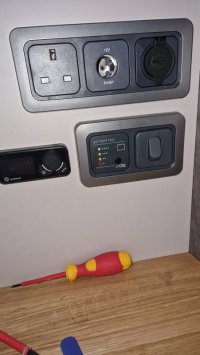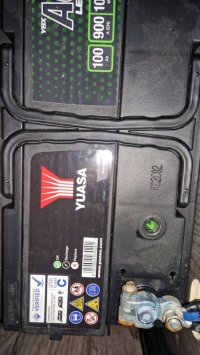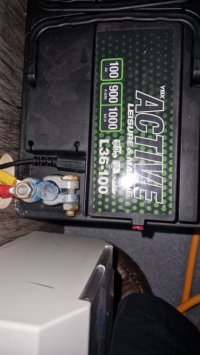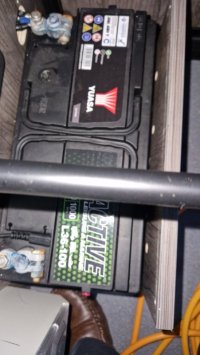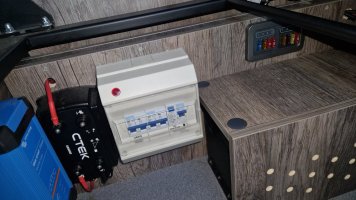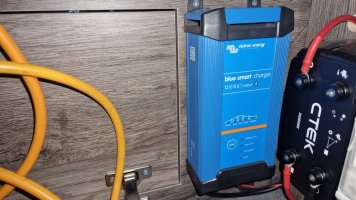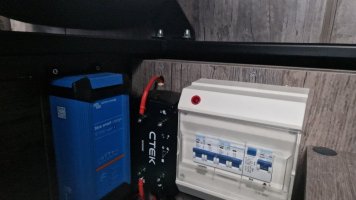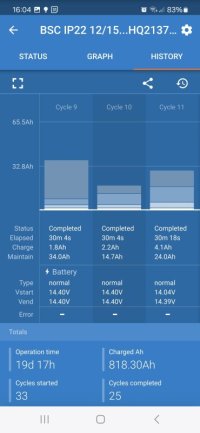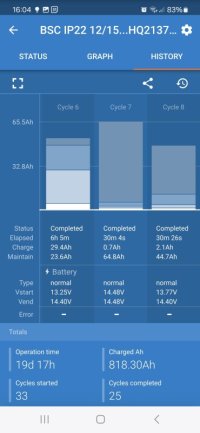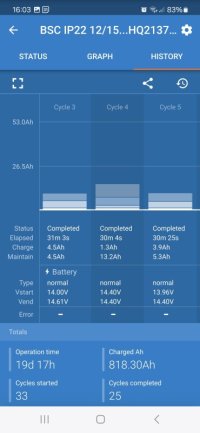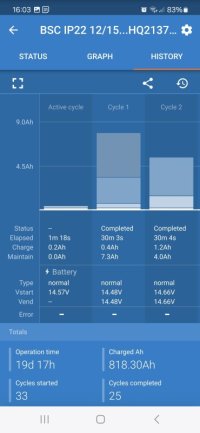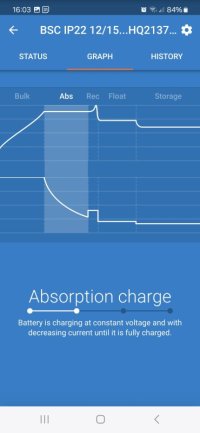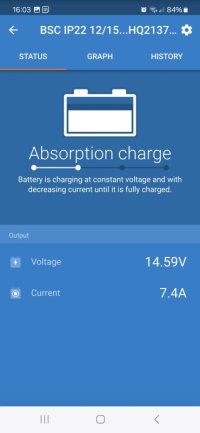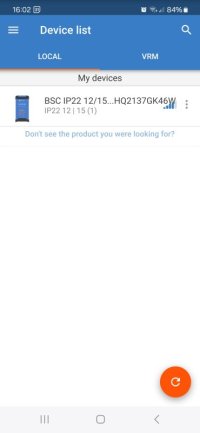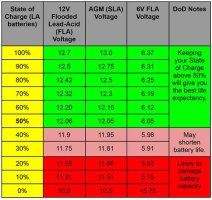Hi all, I'm new to forum and to campervan ownership. We have bought a new T28 conversion and would like to understand the battery and charging setup. The items which depend on the battery in our van from the top of my head are: Fridge; Heater (its run off diesel but has a fan); Lights; Water pump for taps;
Having used our van across the british summer, its just had its first winter trip ...and with no hookup. I now realise I have no idea how its battery setup works. What I do know:
Some specific questions if anyone has the time and patience:
1. The leisure battery seems to be discharging quite quickly in winter when the van is not being used (less than a week) - is this normal?
2. Are we in any danger of damaging anything if we ever flatten the charger battery and recharge it with a normal mains charger or with jump leads from another vehicle?
3. The only indication we have of the charge level of the leisure battery is a set of vertical leds - a green one which lights when on hookup, an orange one which lights when there is a good charge level, an orange one which shows a lower charge level and a red on which shows it needs recharging. Without accessing the leisure battery box, is there somewhere I could connect a multimeter to get a more accurate view of the charge level? What readings would I be looking for?
4. So, the leisure battery can charge from the alternator or from hookup - when we don't have hookup, can anyone help me with any feel for how long the engine needs to run to charge the leisure battery from near empty to full? - with just idling or being driven? (this question arises from the fact that the battery only seemed to cope with one night in the winter using the heater and we'd really like to extend this when no hookup is available)
5. Am I right in thinking the CTEK D250SE is handling the connection to the alternator and the IP22 is handling charging from hookup? The IP22 manual talks about bluetooth connection and an app which I downloaded but couldn't connect - maybe it has to be on hookup? Would this be any use if I got it working?
That'll do for starters - many thanks in advance for any assistance.
Having used our van across the british summer, its just had its first winter trip ...and with no hookup. I now realise I have no idea how its battery setup works. What I do know:
- It has a starter battery and a leisure battery (which I'm 99.9% sure is 12V lead acid and not lithium - its in a box which I haven't worked out how to get into)
- It has a Victron Blue Smart IP22
- It has a CTEK D250SE (the manual for this mentions the option of a CTEK Smartpass 120S but I haven't seen one of these unless its hidden away somewhere)
Some specific questions if anyone has the time and patience:
1. The leisure battery seems to be discharging quite quickly in winter when the van is not being used (less than a week) - is this normal?
2. Are we in any danger of damaging anything if we ever flatten the charger battery and recharge it with a normal mains charger or with jump leads from another vehicle?
3. The only indication we have of the charge level of the leisure battery is a set of vertical leds - a green one which lights when on hookup, an orange one which lights when there is a good charge level, an orange one which shows a lower charge level and a red on which shows it needs recharging. Without accessing the leisure battery box, is there somewhere I could connect a multimeter to get a more accurate view of the charge level? What readings would I be looking for?
4. So, the leisure battery can charge from the alternator or from hookup - when we don't have hookup, can anyone help me with any feel for how long the engine needs to run to charge the leisure battery from near empty to full? - with just idling or being driven? (this question arises from the fact that the battery only seemed to cope with one night in the winter using the heater and we'd really like to extend this when no hookup is available)
5. Am I right in thinking the CTEK D250SE is handling the connection to the alternator and the IP22 is handling charging from hookup? The IP22 manual talks about bluetooth connection and an app which I downloaded but couldn't connect - maybe it has to be on hookup? Would this be any use if I got it working?
That'll do for starters - many thanks in advance for any assistance.


